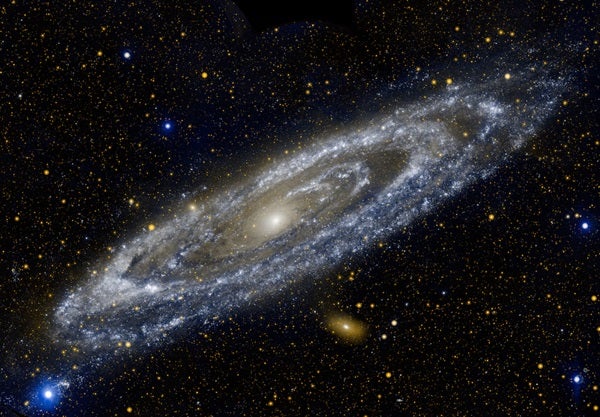10 billion years ago, our own galaxy collided with a smaller dwarf galaxy in a crash so intense that it ripped the smaller body apart and forever changed the structure of the Milky Way.
Blended Family
The Milky Way has a number of distinct structures: The central bulge, spiral arms, the disk and the halo. By looking at the age, movement and composition of stars, scientists can make informed guesses as to how these galactic components formed. They thought that collisions may have been responsible for some of them, but the details of this presumed merger were unknown.
A team of researchers, led by Amina Helmi of the University of Groningen, has discovered some new details about this cosmic merger that are quite surprising, Helmi said. They think that a dwarf galaxy with about a fourth the mass of the Milky Way was pulled inside our home galaxy and then torn apart by our greater gravitational force, its constituent stars spread out and integrated into their new home.
“[It was] dragged in by the gravitational pull of the Milky Way and was completely destroyed by the Milky Way,” Helmi said. “But, because this object is so large, it also caused quite a bit of damage to our own galaxy and it led to distortions.”
They also found that the Milky Way’s inner halo is filled primarily with stars from this impact. “The halo of our galaxy really is made up of stars that were not born in our galaxy but were born in another galaxy that merged with our own … all of the halo that we thought was ours actually belongs to that other galaxy,” Helmi said.
The team also concluded that, because of the sizes of the two colliding galaxies, the crash would have heated the early galactic disk, causing it to become the thicker disk that we now see in the Milky Way.
But, Helmi says, there’s still much more to find out about this long-ago galactic catacalysm. She also notes that, in the future, our galaxy will merge with at least two other objects. One of these mergers will be with the Andromeda galaxy, in at least 5 billion years, Helmi said.
The team was able to complete their work using data from the Gaia spacecraft and the APOGEE stellar survey.










